FRIDAY 29 MARCH 2019
A brief description of our Sunday to Wednesday trip through northern Taiwan
Although I’ve been in Taiwan for more than twenty years, and my wife, Natasja, nearly fifteen years, we’ve never spent more than a few hours in Taiwan’s capital, Taipei. Last year we decided to take a few days off for her birthday this month to discover Northern Taiwan for ourselves.
Our journey started early on Sunday morning with a 360-kilometer, 100-minute journey on the high-speed train to Taipei.
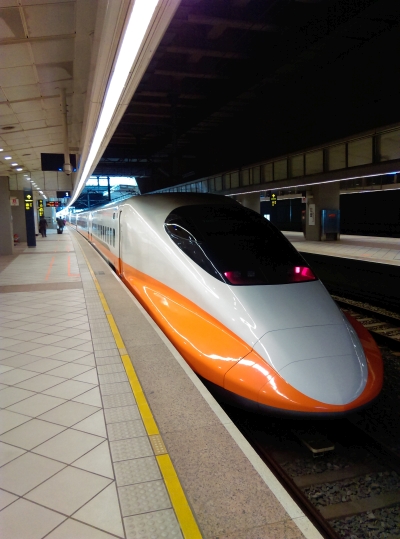
Our first adventure followed shortly after we arrived in Taipei: to find an exit from the tunnels below the station in less than an hour. After we finally saw sunlight again, we walked the ten minutes to our hotel to leave our luggage there. On the way, I discovered that our hotel is just about next-door to the National Taiwan Museum – which we visited after making a quick stop at the hotel.


From there we returned to the tunnels under Taipei Main Station. Twenty minutes or so later we were in Shilin, to visit the official former residence of Chiang Kai-shek and Soong Mei-ling (or Madame Chiang, as she was better known to foreigners) between roughly 1950 and 1975. The building served as the Shilin Horticultural Experimental Station during the Japanese Colonial Era, but was taken over by the Government of the Republic of China after they withdrew to Taiwan in 1949. Here, “old dictator Chiang” – as Roger Waters calls him on Amused to Death – received American president Dwight D. Eisenhower, as well as future presidents Richard Nixon and Ronald Reagan.
We couldn’t take photos inside the house, but I was pleasantly surprised by the place. The rooms are more or less the same as when Chiangs lived there – 1950s style furniture, clothes, books, and some paintings by Madame Chiang. It was a chilly, rainy day in Taipei. This, the solemn atmosphere, and the fact that the house is surrounded by trees and plants, contributed to the impression that it was the type of home where a political leader could find peace for his soul at the end of another day during which his opponents and critics experienced everything but happiness and well-being.
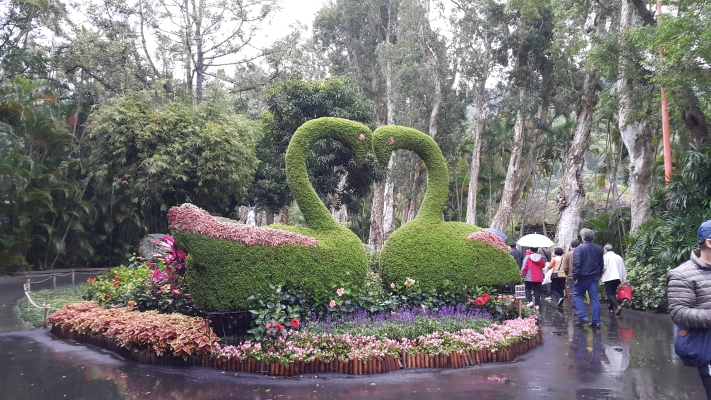





An hour or so after we had walked through the home and gardens, we arrived in Danshui – one of the oldest districts in Taipei. The district is located where the Danshui River flows into the Taiwan Strait. This was one of the reasons why the Spaniards decided 400 years ago to build their fort there, and why first the Dutch and then the British also constructed walls in the same spot. The residence that the British had built for their consulate in 1891 is still standing. The fort next door is in the place where the Spanish built a fort in 1628, before demolishing it in 1642 to prevent the Dutch from using it. The Dutch rebuilt the fort, officials of the Qing Empire restored it in 1724, and from 1868 the British leased it. Some of the rooms in the former consulate have exhibitions, but not much to write about. The fort does have a few figures to give you an idea of the people who at one time had spent time there.






After we made a turn at the river, we walked up the hill towards Aletheia University. The narrow streets led past some interesting buildings, and eateries with traditional dishes such as “Ah-Gei” – a hollowed-out block of tofu stuffed with rice noodles, to Danshui Old Street with dozens of shops and stalls along the way.






Dinner was enjoyed at Shilin Night Market, one metro station closer to Taipei than where we had stopped for the Old Dictator’s house. The night market was definitely different from the markets we are used to in Kaohsiung. Stalls were lined up along the busy street that runs past the market, but the rest of the market is situated in alleys that stretch across the entire neighbourhood. There were a few shops with clothes, shoes, and electronic items, but most stalls and shops sold food and drinks – everything from steamed dumplings and candied fruit to ice cream mixed with peanut butter between two hot cakes, and deep-fried octopus.
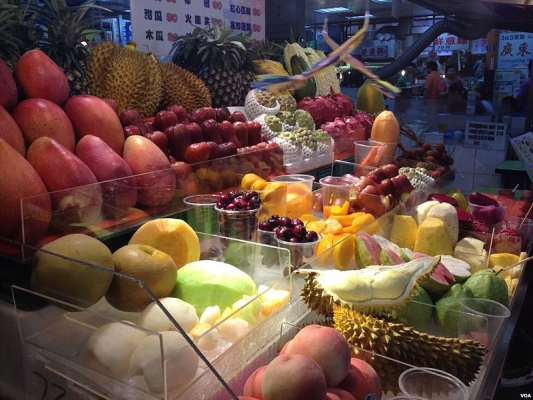




The next morning, shortly after breakfast, we took the train to Ruifang – about forty minutes from Taipei. We first enjoyed some hot beverages, and by 11:00 we departed on the Pingxi Line – a 13-kilometer railway line that goes through eight former mining towns. The towns and surrounding areas are now mainly tourist attractions. Refreshments and large paper lanterns on which people write messages before sending them afloat are big business.




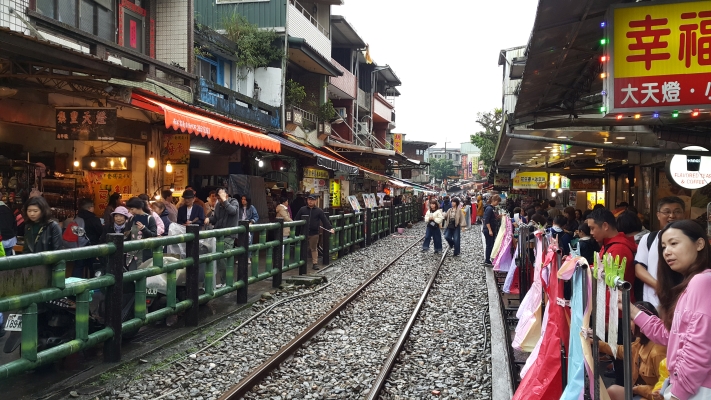


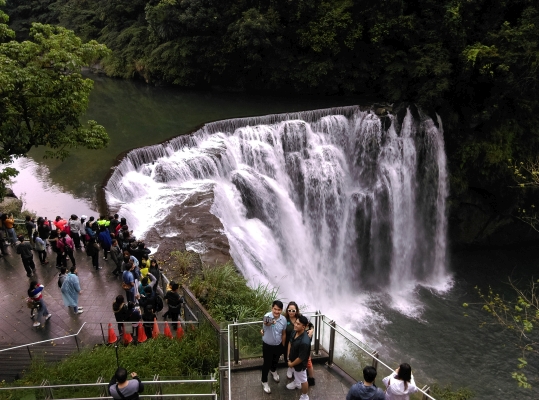




Shortly after we returned to Ruifang we found ourselves on a bus speeding up a mountain pass on the way to Jiufen – as if the driver wanted to get away from the impending fog that would soon hamper our view of the Pacific Ocean.


Dense fog also made it harder to find our next sleeping spot. Jiufen was once known for its gold mine. Decades after all the gold had been mined out, the sleepy village was once again stirred from its slumber when it was used as the location for an award-winning movie in the late eighties. We had booked a room on Airbnb, and to find the place, I even printed a map. In reality, the streets meander through the mist, and the building we had to find was not even on one of the streets on the map. I eventually had to pull out my computer to read the PDF with instructions on how to find the place.

At Jiufen Old Street with our luggage…

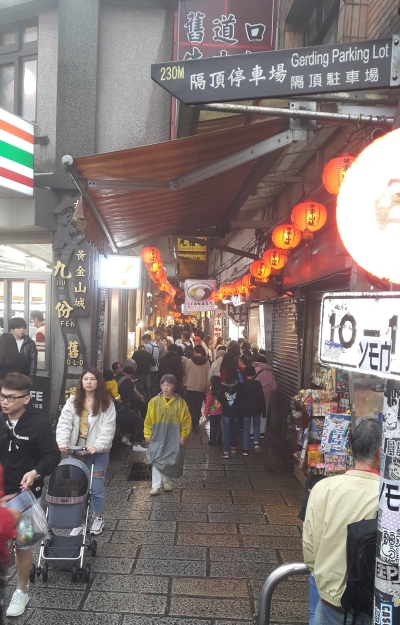


Down the narrow street full of Japanese and Korean tourists, around a few corners, until we reached a traditional wine shop. Next to the shop an exit, with a set of stairs descending into the fog …


More steps, a garden, a footpath …

… and finally, our cosy room.

For the rest of the afternoon and evening we walked through the narrow alleys, had dinner, drank tea, enjoyed sweets, and took more pictures of the people and the alleys and the fog.
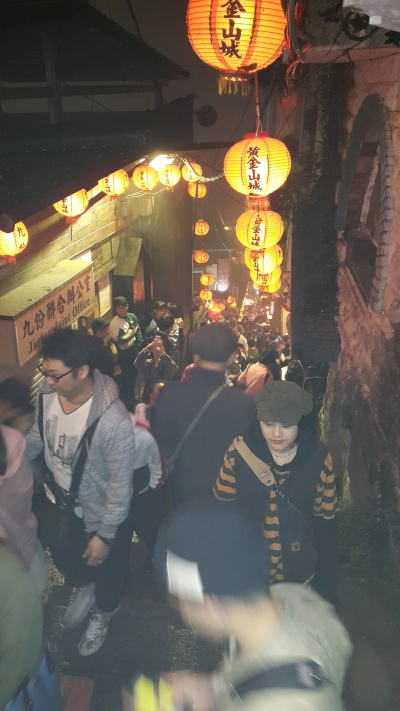

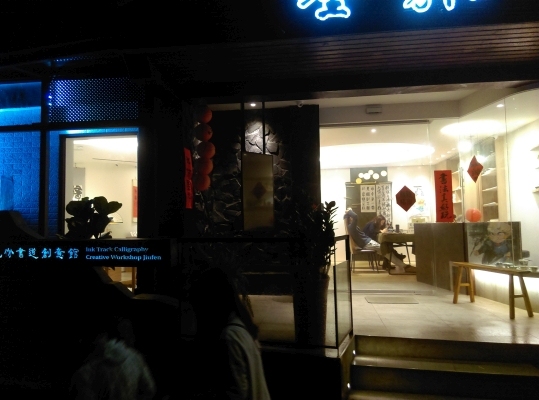


The next morning I woke up shortly after six. The fog had lifted in the meantime, so I went for a walk, and took pictures of the hillsides and the Pacific Ocean just a few miles away. Got some hot coffee and bananas at the Family Mart, took a few more photos, and returned to our room.



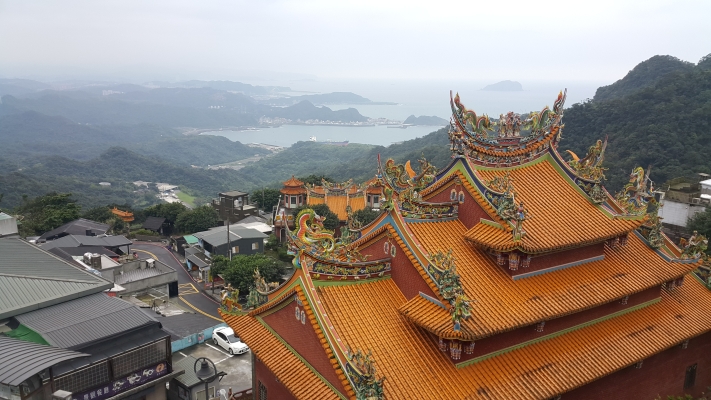






By 08:30 we were at the bus stop to return to Ruifang, to catch a train to Yilan, a city of about half a million people on Taiwan’s east coast. The railway line runs along the coast for about fifty kilometres, and includes a view of the distant volcanic Turtle Island (which, according to one source, can only be visited with a permit, and timely arrangements with a boat owner).






Yilan is the gateway to Taipingshan Forest Recreation Area, and there are some popular hot springs in the vicinity, but since our time was limited, we only visited some of the few places of interest in the city itself. Less than two hours after stopping in Yilan, we departed again – this time for Hualien, about 100 kilometres further south. Shortly after we found our Airbnb, we hit the road to the Hualien Railway Culture Park – a restored 1932 train depot with a handy model of a large part of the city, in case you had no more than an afternoon and an evening to spend in the city. Dinner was enjoyed at the Dongdamen Night Market. (Hualien is most famous for Taroko National Park – which we visited in November 2013.)




I was up again early in the morning, this time to look for two attractions we didn’t have time for the previous day. Both places were still closed, but I could see what I was missing. The first one was an old Japanese-era military facility, where some Kamikaze pilots, according to tradition, had gulped down their last cups of rice wine before flying into the nearest American ships. The other was the Manor House, the official residence of a major military figure during the Japanese colonial era.


Back at our lodgings we made sure the room was decent, then we walked to the closest McDonald’s for breakfast. With thirty minutes to spare, we pitched up at Hualien train station for our five-hour journey back to Kaohsiung – down the east coast, and through the mountains that form the backbone of this beautiful island.



______________________